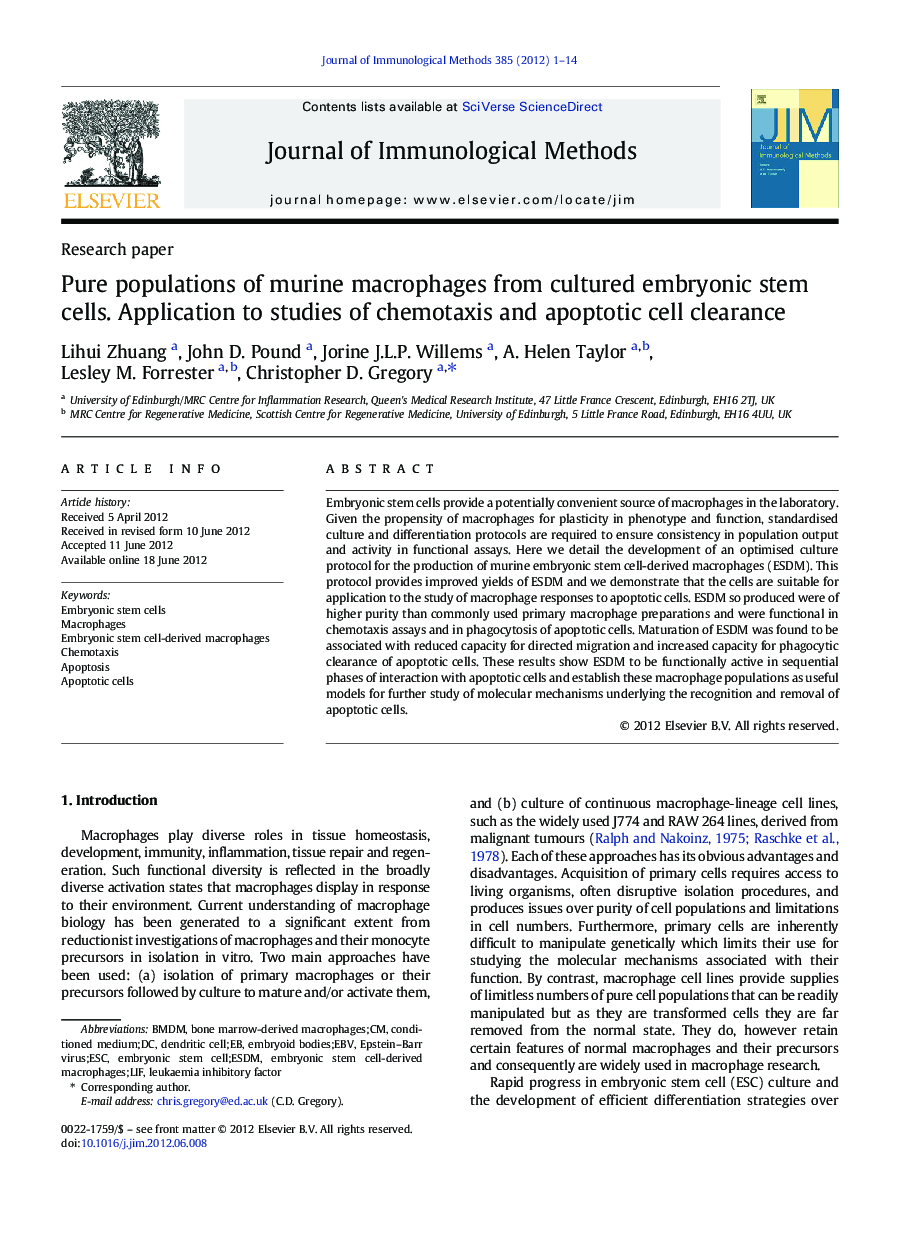| Article ID | Journal | Published Year | Pages | File Type |
|---|---|---|---|---|
| 2088362 | Journal of Immunological Methods | 2012 | 14 Pages |
Embryonic stem cells provide a potentially convenient source of macrophages in the laboratory. Given the propensity of macrophages for plasticity in phenotype and function, standardised culture and differentiation protocols are required to ensure consistency in population output and activity in functional assays. Here we detail the development of an optimised culture protocol for the production of murine embryonic stem cell-derived macrophages (ESDM). This protocol provides improved yields of ESDM and we demonstrate that the cells are suitable for application to the study of macrophage responses to apoptotic cells. ESDM so produced were of higher purity than commonly used primary macrophage preparations and were functional in chemotaxis assays and in phagocytosis of apoptotic cells. Maturation of ESDM was found to be associated with reduced capacity for directed migration and increased capacity for phagocytic clearance of apoptotic cells. These results show ESDM to be functionally active in sequential phases of interaction with apoptotic cells and establish these macrophage populations as useful models for further study of molecular mechanisms underlying the recognition and removal of apoptotic cells.
Graphical abstractFigure optionsDownload full-size imageDownload as PowerPoint slideHighlights► We report a method to produce murine embryonic stem cell-derived macrophages (ESDM). ► 2 × 107 ESDM can be produced from 6 × 105 embryonic stem cells. ► ESDM are of higher purity than commonly used primary macrophage preparations. ► The ESDM have functional chemotactic responses and can phagocytose apoptotic cells.
